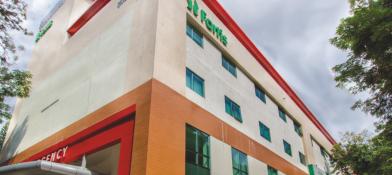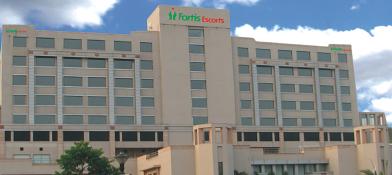Bone Density Test
What is Bone Density Test
Bone mineral density (BMD) test also called as bone density scan or test is a noninvasive procedure that is utilized to examine bone-related disorders, particularly osteoporosis. Bones with high mineral content are denser, stronger, and less fragile. This test employs X-rays and other ionizing rays to assess the density of bone minerals, such as calcium, within a specific bone segment.
Objective of Bone Density Test
- Early detection of osteoporosis.
- Determine the risk of possible fractures or broken bones.
- Track the effectiveness of treatment for osteoporosis.
- Personalized treatment planning
Importance of Bone density test
Individuals can undergo a bone density test to gain awareness of fracture risk factors, enabling them to understand their bone health and make informed predictions about future risks. Below are the possible facts for being vigilant about bone health and adapting to lifestyle changes accordingly.
- Women with a history of vertebral fracture have a high chance of another vertebral fracture in the future.
- Women with high bone formation markers such as bone-specific alkaline phosphatase, osteocalcin, and serum procollagen type 1 N-terminal propeptide.
- Women having lower levels of serum estradiol.
By understanding the above facts, individuals can take proactive measures, such as early diagnosis of osteoporosis, lifestyle modifications to minimize the likelihood of encountering fractures, and prioritize their bone health.
Criteria for Bone Mineral Density Testing
According to the National Osteoporosis Foundation, the decision to test for BMD should be based on an individual's risk profile. The risk factors for people who should get a BMD test are as below:
- Postmenopausal women, age 65 or above, irrespective of alternate risk factors, who had not tested for BMD but are on osteoporosis medication.
- Women who have gone through menopause, who are under 65 years old, and who have one or more additional osteoporosis risk factors.
- Postmenopausal women who experienced any adult fracture beyond the age of 45.
Techniques used to measure bone density test
DEXA: A central dual-energy x-ray absorptiometry (DXA or DEXA) test is the most used method for determining bone mineral density. DXA measures the amount of calcium and other minerals in a particular region of the bone.
The technology used in this instrument is a photon beam with varying energy levels, which functions as a form of ionizing radiation. DXA often assesses bone mineral density in the hip, proximal femur, and spine. When suitable software is used, DEXA instruments can extend their measurement to forearm BMD, total body BMD, and total body composition.
Peripheral Dual-energy X-ray Absorptiometry (pDXA): This portable form of DXA determines bone mineral density (BMD) at peripheral sites, such as the finger, heel, or wrist. Although pDXA is not as precise as central DXA, it is still used as a screening technique that can assist in identifying people who might need more testing.
X-ray: When it comes to managing osteoporosis, conventional X-rays are most helpful in diagnosing fractures, tracking their healing, and assessing for skeletal illnesses that change how bone appears on radiographs.
Quantitative Computed Tomography (QCT): This imaging technique measures bone mineral density and is capable of distinguishing between the cortical and trabecular bone compartments It can assess BMD at the spine and hip region by using special software.
Utilization of QCT lies in research studies where the technology is utilized to assess bone structure, bone size, and changes in cortical and trabecular bone compartments resulting from drug therapy. The unique advantage of this technique is that it assesses three-dimensional bone density and enables isolated measurement of trabecular bone density.
Quantitative ultrasound (QUS): This technique displays images of bones and makes predictions about the risk of osteoporosis and fractures. However, it is less informative than DXA and is not used to track the progression of osteoporosis. However, if QUS indicates susceptibility to osteoporosis or fractures, the physician might suggest a central DXA scan to validate the results.
Interpretation of Bone density test
Women or men aged 50 and above who are subjected to bone mineral test will receive a T-score as their result. The T-score represents the comparision betwwen individual's bone mineral density and reference value 0 which indicates the standard bone mineral density of a healthy young adult, which is defined as 0 on the T-score scale.
A T-score in bone mineral density testing represents the comparison between an individual's bone mineral density and the reference value of 0, which signifies standard mesuremnet of the bone mineral density in healthy young adults.
Analyzing the T-score is as follows
T-score of -1 or higher: This indicates that the individual's bone health is within a healthy range, suggesting a lower risk of fractures.
A T-score within the range of -1 to -2.5: This indicates a diagnosis of osteopenia, which is a less severe form of low bone mineral density when compared to osteoporosis. While osteopenia may not have the same level of severity as osteoporosis, individuals within this range still face an increased risk of fractures compared to those with a T-score above -1.
T-score of -2.5 or lower: This T-score suggests the possibility of osteoporosis, a condition characterized by significantly low bone mineral density. Individuals in this range are at a higher risk of fractures due to their decreased bone strength and density.
It is critical to take note that every 1-point drop in the T-score compares to a 1.5 to twice increment in the risk of supporting a bone fracture. Accordingly, as the T-score diminishes, the risk of fractures or cracks rises.
Interpreting the T-score from a bone mineral thickness test assists people and medical specialists in evaluating the well-being of their bones and deciding the suitable preventive measures or therapies to advance bone well-being and diminish the risk of fractures.
Facts on Bone Density Test Awareness
Globally, the clinical guidelines shed light on the awareness and approach to bone density testing for osteoporosis prevention and treatment. However, here are the facts for the screening approach to the test.
- No universal bone mineral density (BMD) policy is presently established. The patients are referred for bone densitometry test depending upon the case findings and risk factors.
- In past decades, significant advancements were made in the prevention of osteoporosis with the introduction of effective treatments along with a rapid pace of technological innovation in noninvasive radiologic methods to assess bone density status. While dual-energy X-ray absorptiometry (DXA) scanning of the hip and spine remains the gold standard, there is growing recognition of the need for smaller, more affordable devices to scan the peripheral skeleton. This is crucial for identifying and treating the large population of women at the highest risk of fragility fractures.
- Presently, mass screening for osteoporosis using quantitative ultrasound is not recommended by experts as the referral is based on individual case bases and risk factors.
Conclusion
Bone mineral testing is a critical and imperative part of assessing bone health, diagnosing osteoporosis, and monitoring the risk of fractures. By estimating bone thickness utilizing procedures like DXA, QCT, and pDXA, healthcare providers can arrive at informed decisions about therapy and preventive measures to work on skeletal well-being.



















